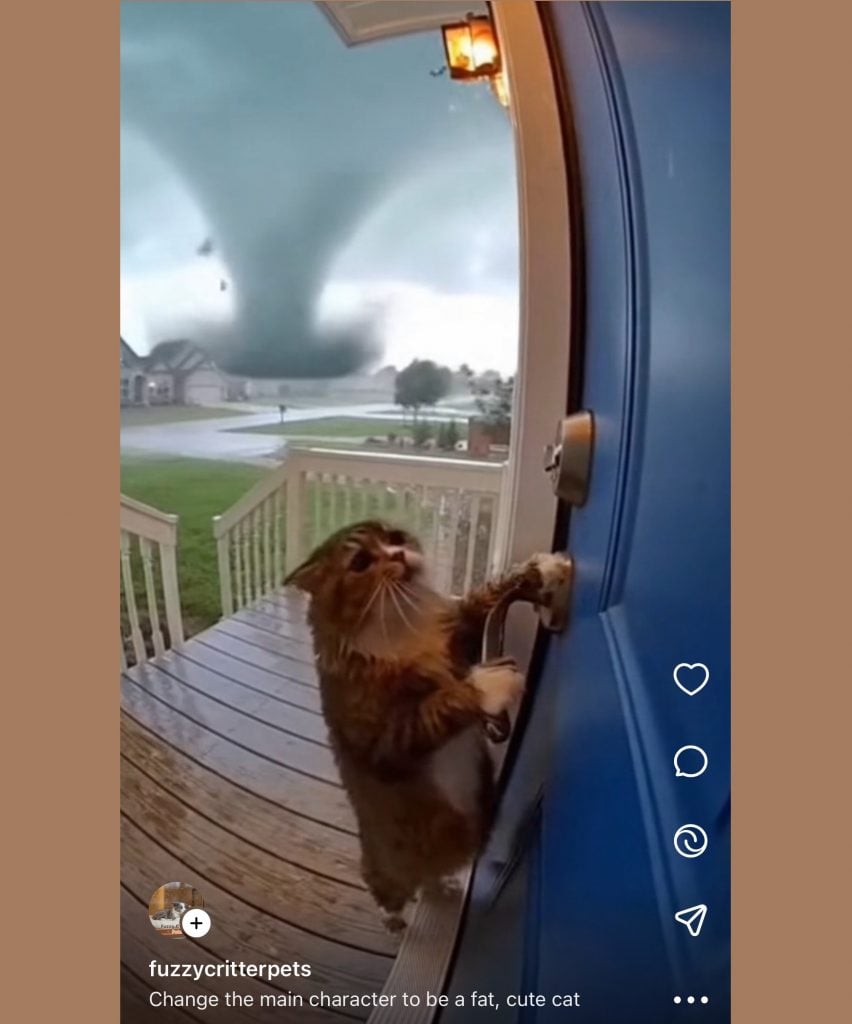
The new A.I. video app is pumping out huge quantities of Bob Ross content.

“Evil magic,” said a friend, looking over the Sora 2 A.I. video app, after getting access. “The death of video art,” an artist I know intoned, grimly, scrolling through the endless, TikTok-style feed of 10-second A.I.-generated clips.
I readily agree with the “evil” part of “evil magic,” but I have to concede the “magic” part, too. Yes, my skin crawls scrolling the Sora feed, thinking of the demonic amounts of energy, water, and capital going to spin up an app whose big use is sharing realistic clips of ballerinas farting. It’s an inanity engine, when it is not sinister—the sheer in-your-face accessibility of Sora 2 also makes it clear that we now truly live in a “post-reality” world, where no one should believe anything they see.
But people are going to love it as a time waster!
Technically, the problems represented by the “Will Smith eating spaghetti” clip of a few years ago have been solved. Tics and quirks remain, the most notable being that it often seems to assign dialogue that was clearly generated for one character to another. But you truly can create little videos of almost anything in any style, in less than the time it takes to make instant coffee, and consume truly endless amounts of other people’s A.I. creations.
Because it aspires to be A.I.-Tok, Sora 2 also encourages you to remix anyone else’s clips, and doing so is pretty seamless. You can make, say, Martin Luther King say “I have a pizza” instead of “I have a dream,” and it’s convincing. Most importantly of all, because you give it your face when you log in, you can inject yourself into any clip or scenario. As Max Read notes, that’s the innovation that is really going to power this.
I wasted an afternoon making clip after clip of myself in ’90s-style music videos about art criticism, or saving the day as a superhero with Mr. Fantastic-style stretchy powers…
Yet that infamous “Will Smith eating spaghetti” clip has stuck around as a reference. It’s memorably disgusting, and unsettling and, most of all, perversely meaningful as a symbol of generative A.I. glitching out. That doesn’t exactly make it video art, but it makes it much more lasting than anything I’ve seen in days of tooling around on Sora 2 (yes, that includes my own ’90s-style art critic boy band videos).
The most wholesome use case is people putting their own faces into fantastical scenarios, making jokes and goofs. The ability to self-insert may produce its own class of stars whom some pool of users get a particular kick out of meme-ing because they are funny looking or attractive and unafraid to be used as a puppet. But mainly you are looking in on in-jokes between friends and family. This will be very amusing until the phenomenon enters its, “Oh god, it’s Uncle Ben with another one of his corny videos of himself as a stretchy superhero” stage.
It’s astonishing how fast your brain goes from, “that’s possible?” to “this again?” And the entire Sora 2 apparatus seems expressly designed as a firehose to douse whatever spark of wonder you feel. Every half-good idea immediately gets repeated to nothing. It’s amusing in bursts, but it doesn’t take that long on there for all this to feel relentless and draining and bleak, for me at least.
(At least in this pre-public access phase, your endless scroll is interrupted periodically by a screen asking fretfully about how it’s affecting your mood. I answered that the effect was “negative,” being honest, and was met each time with a question: “What would you like to see more of?” The correct answer is always consuming more content.)

Screenshot of a video from Sora 2.
I would predict that the distribution of attention on an app like this will be even more dramatically asymmetrical than it is on “human-made” social media. It’s easy to let your personal interest in seeing yourself as an A.I. character distract you from how uninteresting it is to see strangers do the same. The bar to clear to get you engaged with other people’s A.I. memes is very high, since it’s mostly some hybrid of two infamously uninvolving things: looking at other people’s vacation photos and hearing descriptions of other people’s dreams.
Even in the still-gated version of Sora 2, there is an astonishing amount of thirsty engagement farming. There are tons of clips of characters shouting at you, “Nothing happens when you double tap the image,” trying to trick you into liking the post.
What makes Sora 2 such a breeze to use is also what makes it such a bummer: the A.I. is very clever, and does so much of the work. OpenAI really wants to deskill viral content production, so they have stacked the deck so that you can’t lose. You can get granular with prompts for increased control—but even a five-word prompt spins up a scene with passably funny dialogue, riffing on your premise all by itself; the single-word prompt “rap” will produce a video of someone rapping in an alley without you writing one rhyme; telling it to cut a trailer gives you something with narration and a title and taglines and voiceover.

Screenshot of a video featuring John F. Kennedy, from Sora 2.
Making MLK or Stephen Hawking do or say degrading things is a big trend just now, alongside—shudder—ungodly quantities of clips that incorporate dirtbag influencer megastar Jake Paul or terrifying baby-faced OpenAI CEO Sam Altman, both of whom have the settings clicked on Sora so that anyone can A.I. their likenesses as they please (Hawking and MLK, being dead, don’t get to opt out).
In terms of art, it is Bob Ross who shows up most—it’s hard to go 5 minutes without seeing Bob Ross saying or doing something, usually something horrible. Because he is known for standing at a canvas with an easel, Ross is a handy symbol of art-making to riff on in this art app—but the symbol has two sides.
I’ve written about the now-decade-long digital Bob Ross revival before, and have my own theory of the set of convergent factors that make the late PBS star such a staple of online life. Of course, I get why it’s funny (or people think it’s funny) to see an avatar of earnest niceness recast as a drunken pirate, or playing Metallica on drums, or being being beaten up by a pro Wrestler, or as a videogame streamer with brainrot.
With his fluffy mane, defiant un-coolness, and ASMR voice, he functions like a social-media art influencer avant la lettre, someone whose meme-ability is more important than the content of his low-key and unremarkable art. I think Ross stands for a kind of populism, and deskilling, and even a desire to be the center of media attention that connects with what this incarnation of generative A.I. video promises, as a positive model of creativity.
But there’s another side to Bob Ross as an art symbol. Ross’s famous show was called The Joy of Painting. What his fans found comforting and even moving about that show was the pleasure that he clearly took in process. It’s the proto-slow-TV pleasure of sticking with the artist as he builds something up, over time. It’s the idea that the satisfactions of the journey mattered more than how grabby the output was. (The “Bob Ross Effect,” where watching the show improved emotional health compared to more frenetic entertainment, is something scientists have actually studied.) Consciously and unconsciously, Sora 2’s impulse to meme Ross into oblivion reflects that it alienates people farther and farther from that idea of creativity.
What’s not important about Bob Ross as a symbol of art is the paintings themselves, as specific images—but then it is the specific image outputs that generative A.I. cheapens. Where does artistic value flow, then? Two ways. On the one hand, Sora 2 accelerates the emptying out of specific images, so that they never stand alone but are pure vessels for attention flows and viral remixing. But on the other, you might hope that it would send people back towards appreciating the material process behind images as valuable and renewing and worthwhile for its own sake. Maybe it’s wishful thinking, but if I were an investing man, I might move some fraction of my chips out of A.I. and into the old staples, Cadmium Yellow, Titanium White, and Van Dyke Brown.
Source: https://news.artnet.com/art-world/sora-bob-ross-2698297